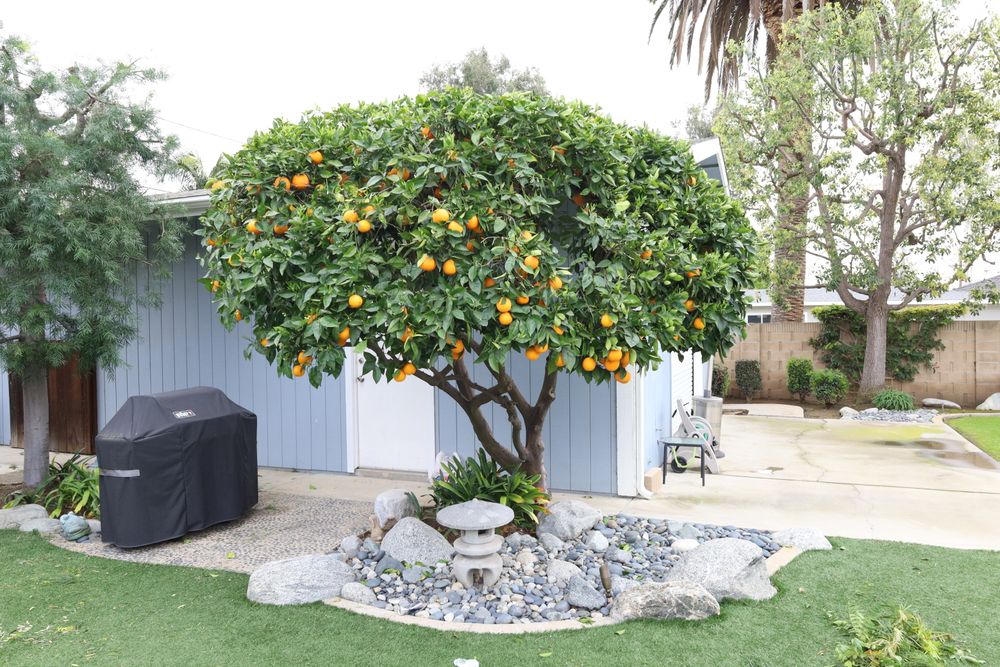Tree trimming isn’t just about keeping your yard looking nice—it’s essential for the health and safety of your trees. But how often should you do it? Some homeowners trim too much, some not enough, and others avoid it entirely until a branch crashes into their roof during a storm. Let’s break it down so your trees stay in top shape without unnecessary (or overdue) cuts.
The General Rule: Once Every 1-3 Years
For most trees, a professional trim every one to three years is a solid rule of thumb. But not all trees follow the same schedule—some need more frequent attention, while others can go longer between trims. The right timing depends on the type of tree, its age, and your goals for its health and appearance.
Young Trees: Shape ‘Em Up Early (Every 1-2 Years)
Think of young trees like kids—they need guidance early on to grow strong and healthy. Regular pruning helps establish a solid structure, reducing the risk of weak limbs down the line. For the first few years, trimming every year or two keeps them on the right path.
Mature Trees: Maintenance Mode (Every 3-5 Years)
Once a tree reaches maturity, it doesn’t need as much pruning—just enough to remove dead branches, improve airflow, and maintain its shape. Most mature trees do well with a trim every three to five years, though certain fast-growing species may need more frequent care.
Ornamental Trees: Aesthetic Touch-Ups (Every 1-2 Years)
If you have trees like crape myrtles or Japanese maples, trimming is more about keeping their shape and encouraging blooms. These trees often benefit from an annual trim to stay looking their best.
Signs Your Tree Needs Trimming Sooner
Even if your tree’s on a standard schedule, sometimes it needs a little extra attention. Watch for these signs that it’s time to call in the pros:
- Dead or dying branches – These can fall unexpectedly, posing a risk to people and property.
- Overgrown limbs – If branches are brushing your roof, blocking your driveway, or interfering with power lines, it’s time for a trim.
- Dense canopies – A tree that’s too thick blocks sunlight and airflow, increasing the risk of disease.
- Storm damage – If high winds or heavy rain have left your tree looking rough, a professional pruning can help it recover.
The Best Time to Trim Your Trees
Timing matters! Here’s when to schedule tree trimming for the best results:
- Late Winter/Early Spring – This is ideal for most trees since they’re still dormant, and pruning before new growth starts helps shape them for the season.
- Summer – Good for touching up fast-growing trees or removing storm-damaged branches.
- Fall – Usually not the best time to trim, as trees are preparing for winter dormancy.
- After Storms – If a storm causes damage, don’t wait—address it ASAP to prevent further issues.
Why Professional Tree Trimming Matters
Sure, you can grab a pair of shears and take a whack at your trees, but improper pruning can do more harm than good. Over-trimming weakens trees, while bad cuts invite disease. A professional tree service—like Arkadia Tree Services—knows exactly where and how to cut to keep your trees strong, healthy, and beautiful.
Time for a Trim? Call Arkadia Tree Services!
If your trees are looking a little wild (or you’re not sure when they were last trimmed), it’s time to call in the experts. At Arkadia Tree Services, we provide expert pruning that promotes growth, enhances aesthetics, and keeps your property safe.
Contact us today to schedule your tree trimming service! Let’s keep your trees looking great and growing strong.



